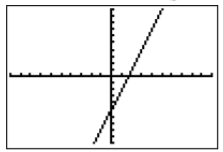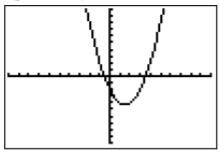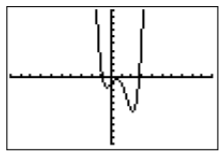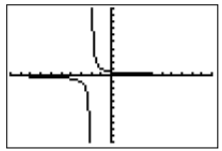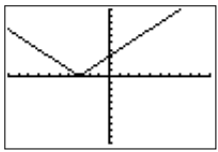4.3: Ejercicios
- Page ID
- 117644
\( \newcommand{\vecs}[1]{\overset { \scriptstyle \rightharpoonup} {\mathbf{#1}} } \)
\( \newcommand{\vecd}[1]{\overset{-\!-\!\rightharpoonup}{\vphantom{a}\smash {#1}}} \)
\( \newcommand{\dsum}{\displaystyle\sum\limits} \)
\( \newcommand{\dint}{\displaystyle\int\limits} \)
\( \newcommand{\dlim}{\displaystyle\lim\limits} \)
\( \newcommand{\id}{\mathrm{id}}\) \( \newcommand{\Span}{\mathrm{span}}\)
( \newcommand{\kernel}{\mathrm{null}\,}\) \( \newcommand{\range}{\mathrm{range}\,}\)
\( \newcommand{\RealPart}{\mathrm{Re}}\) \( \newcommand{\ImaginaryPart}{\mathrm{Im}}\)
\( \newcommand{\Argument}{\mathrm{Arg}}\) \( \newcommand{\norm}[1]{\| #1 \|}\)
\( \newcommand{\inner}[2]{\langle #1, #2 \rangle}\)
\( \newcommand{\Span}{\mathrm{span}}\)
\( \newcommand{\id}{\mathrm{id}}\)
\( \newcommand{\Span}{\mathrm{span}}\)
\( \newcommand{\kernel}{\mathrm{null}\,}\)
\( \newcommand{\range}{\mathrm{range}\,}\)
\( \newcommand{\RealPart}{\mathrm{Re}}\)
\( \newcommand{\ImaginaryPart}{\mathrm{Im}}\)
\( \newcommand{\Argument}{\mathrm{Arg}}\)
\( \newcommand{\norm}[1]{\| #1 \|}\)
\( \newcommand{\inner}[2]{\langle #1, #2 \rangle}\)
\( \newcommand{\Span}{\mathrm{span}}\) \( \newcommand{\AA}{\unicode[.8,0]{x212B}}\)
\( \newcommand{\vectorA}[1]{\vec{#1}} % arrow\)
\( \newcommand{\vectorAt}[1]{\vec{\text{#1}}} % arrow\)
\( \newcommand{\vectorB}[1]{\overset { \scriptstyle \rightharpoonup} {\mathbf{#1}} } \)
\( \newcommand{\vectorC}[1]{\textbf{#1}} \)
\( \newcommand{\vectorD}[1]{\overrightarrow{#1}} \)
\( \newcommand{\vectorDt}[1]{\overrightarrow{\text{#1}}} \)
\( \newcommand{\vectE}[1]{\overset{-\!-\!\rightharpoonup}{\vphantom{a}\smash{\mathbf {#1}}}} \)
\( \newcommand{\vecs}[1]{\overset { \scriptstyle \rightharpoonup} {\mathbf{#1}} } \)
\( \newcommand{\vecd}[1]{\overset{-\!-\!\rightharpoonup}{\vphantom{a}\smash {#1}}} \)
\(\newcommand{\avec}{\mathbf a}\) \(\newcommand{\bvec}{\mathbf b}\) \(\newcommand{\cvec}{\mathbf c}\) \(\newcommand{\dvec}{\mathbf d}\) \(\newcommand{\dtil}{\widetilde{\mathbf d}}\) \(\newcommand{\evec}{\mathbf e}\) \(\newcommand{\fvec}{\mathbf f}\) \(\newcommand{\nvec}{\mathbf n}\) \(\newcommand{\pvec}{\mathbf p}\) \(\newcommand{\qvec}{\mathbf q}\) \(\newcommand{\svec}{\mathbf s}\) \(\newcommand{\tvec}{\mathbf t}\) \(\newcommand{\uvec}{\mathbf u}\) \(\newcommand{\vvec}{\mathbf v}\) \(\newcommand{\wvec}{\mathbf w}\) \(\newcommand{\xvec}{\mathbf x}\) \(\newcommand{\yvec}{\mathbf y}\) \(\newcommand{\zvec}{\mathbf z}\) \(\newcommand{\rvec}{\mathbf r}\) \(\newcommand{\mvec}{\mathbf m}\) \(\newcommand{\zerovec}{\mathbf 0}\) \(\newcommand{\onevec}{\mathbf 1}\) \(\newcommand{\real}{\mathbb R}\) \(\newcommand{\twovec}[2]{\left[\begin{array}{r}#1 \\ #2 \end{array}\right]}\) \(\newcommand{\ctwovec}[2]{\left[\begin{array}{c}#1 \\ #2 \end{array}\right]}\) \(\newcommand{\threevec}[3]{\left[\begin{array}{r}#1 \\ #2 \\ #3 \end{array}\right]}\) \(\newcommand{\cthreevec}[3]{\left[\begin{array}{c}#1 \\ #2 \\ #3 \end{array}\right]}\) \(\newcommand{\fourvec}[4]{\left[\begin{array}{r}#1 \\ #2 \\ #3 \\ #4 \end{array}\right]}\) \(\newcommand{\cfourvec}[4]{\left[\begin{array}{c}#1 \\ #2 \\ #3 \\ #4 \end{array}\right]}\) \(\newcommand{\fivevec}[5]{\left[\begin{array}{r}#1 \\ #2 \\ #3 \\ #4 \\ #5 \\ \end{array}\right]}\) \(\newcommand{\cfivevec}[5]{\left[\begin{array}{c}#1 \\ #2 \\ #3 \\ #4 \\ #5 \\ \end{array}\right]}\) \(\newcommand{\mattwo}[4]{\left[\begin{array}{rr}#1 \amp #2 \\ #3 \amp #4 \\ \end{array}\right]}\) \(\newcommand{\laspan}[1]{\text{Span}\{#1\}}\) \(\newcommand{\bcal}{\cal B}\) \(\newcommand{\ccal}{\cal C}\) \(\newcommand{\scal}{\cal S}\) \(\newcommand{\wcal}{\cal W}\) \(\newcommand{\ecal}{\cal E}\) \(\newcommand{\coords}[2]{\left\{#1\right\}_{#2}}\) \(\newcommand{\gray}[1]{\color{gray}{#1}}\) \(\newcommand{\lgray}[1]{\color{lightgray}{#1}}\) \(\newcommand{\rank}{\operatorname{rank}}\) \(\newcommand{\row}{\text{Row}}\) \(\newcommand{\col}{\text{Col}}\) \(\renewcommand{\row}{\text{Row}}\) \(\newcommand{\nul}{\text{Nul}}\) \(\newcommand{\var}{\text{Var}}\) \(\newcommand{\corr}{\text{corr}}\) \(\newcommand{\len}[1]{\left|#1\right|}\) \(\newcommand{\bbar}{\overline{\bvec}}\) \(\newcommand{\bhat}{\widehat{\bvec}}\) \(\newcommand{\bperp}{\bvec^\perp}\) \(\newcommand{\xhat}{\widehat{\xvec}}\) \(\newcommand{\vhat}{\widehat{\vvec}}\) \(\newcommand{\uhat}{\widehat{\uvec}}\) \(\newcommand{\what}{\widehat{\wvec}}\) \(\newcommand{\Sighat}{\widehat{\Sigma}}\) \(\newcommand{\lt}{<}\) \(\newcommand{\gt}{>}\) \(\newcommand{\amp}{&}\) \(\definecolor{fillinmathshade}{gray}{0.9}\)Grafica la ecuación en la ventana estándar.
- \(y=3x-5\)
- \(y=x^2-3x-2\)
- \(y= x^4-3x^3+2x-1\)
- \(y=\sqrt{x^2-4}\)
- \(y=\dfrac 1 {x+2}\)
- \(y=|x+3|\)
Para el último ejercicio, el valor absoluto se obtiene presionando\(\boxed {\text{math}}\boxed {\triangleright } \boxed {\text{enter}}\).
- Responder
-
Resuelve la ecuación para\(y\) y grafica todas las ramas en una misma ventana.
- \(x^2+y^2=4\)
- \((x+5)^2+y^2=15\)
- \((x-1)^2+(y-2)^2 = 9\)
- \(y^2+x^2-8x-14=0\)
- \(y^2=x^2+3\)
- \(y^2=-x^2+77\)
- Responder
-
- \(y_{1}=\sqrt{4-x^{2}}\),\(y_{2}=-\sqrt{4-x^{2}}\),
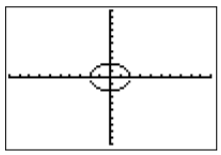
- \(y_{1}=\sqrt{15-(x+5)^{2}}\),\(y_{2}=-\sqrt{15-(x+5)^{2}}\),
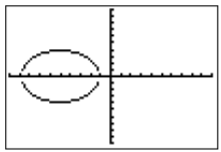
- \(y_1=2+\sqrt{9-(x-1)^{2}}\),\(y_{2}=2-\sqrt{9-(x-1)^{2}}\),

- \(y_{1}=\sqrt{-x^{2}+8 x+14}\),\(y_2=-\sqrt{-x^{2}+8 x+14}\),
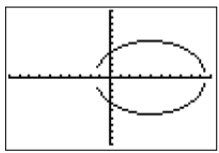
- \(y_{1}=\sqrt{x^{2}+3}\),\(y_{2}=-\sqrt{x^{2}+3}\),
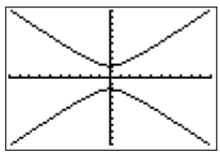
- \(y_{1}=\sqrt{-x^{2}+77}\),\(y_{2}=-\sqrt{-x^{2}+77}\),
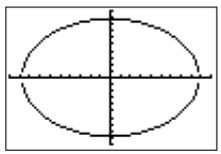
- \(y_{1}=\sqrt{4-x^{2}}\),\(y_{2}=-\sqrt{4-x^{2}}\),
Encuentra todos los ceros de la función dada. Redondee su respuesta a la centésima más cercana.
- \(f(x)=x^2+3x+1\)
- \(f(x)=x^4-3x^2+2\)
- \(f(x)=x^3+2x-6\)
- \(f(x)=x^5-11x^4+20x^3+88x^2-224x+1\)
- \(f(x)=x^3-5x^2+2x+3\)
- \(f(x)=\sqrt{2^x-3}-2x+3\)
- \(f(x)=0.04 x^3-0.02x^2-0.5174x+0.81\)
- \(f(x)=0.04 x^3-0.02x^2-0.5175x+0.81\)
- \(f(x)=0.04 x^3-0.02x^2-0.5176x+0.81\)
- Responder
-
- \(x \approx-2.62, x \approx-0.38\)
- \(x=\pm 1, x=\pm \sqrt{2} \approx \pm 1.41\)
- \(x \approx 1.46\)
- \(x \approx-2.83, x \approx 0.01, x \approx 2.82, x \approx 4.01, x \approx 7.00\)
- \(x \approx-0.578, x \approx 1.187, x \approx 4.388\)
- \(x \approx 1.61, x=2, x \approx 6.91\)
- \(x \approx-4.00\)
- \(x=-4, x=2.25\)
- \(x \approx-4.00, x \approx 2.22, x \approx 2.28\)
Encuentra todas las soluciones de la ecuación. Redondee su respuesta a la milésima más cercana.
- \(x^3+3=x^5+7\)
- \(4x^3+6x^2-3x-2=0\)
- \(\dfrac{2x}{x-3}=\dfrac{x^2+2}{x+1}\)
- \(5^{3x+1}=x^5+6\)
- \(x^3+x^2=x^4-x^2+x\)
- \(3x^2=x^3-x^2+3x\)
- Responder
-
- \(x \approx-1.488\)
- \(x \approx-1.764, x \approx-0.416, x \approx 0.681\)
- \(x \approx 5.220\)
- \(x \approx-1.431, x \approx 0.038\)
- \(x \approx-1.247, x=0, x \approx 0.445, x \approx 1.802\)
- \(x=0, x=1, x=3\)
Grafica la ecuación. Determine cuántos máximos y mínimos tiene la gráfica. Para ello, redimensiona la ventana gráfica (a través de las funciones de zoom, zoom y zoom-box de la calculadora) para acercar los máximos o mínimos del gráfico.
- \(y=x^2-4x+13\)
- \(y=-x^2+x-20\)
- \(y=2x^3 -5x^2+3x\)
- \(y=x^4-5x^3+8x^2-5x+1\)
- Responder
-
- Hay un mínimo. Aleje el zoom para la gráfica.
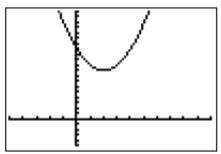
- Hay un máximo. Redimensiona la ventana a Ymin= −100.
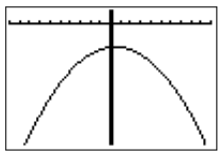
- Hay un máximo local y un mínimo local. La gráfica con Xmin=−4, Xmax= 4, Ymin= −2, Ymax= 2 está abajo.
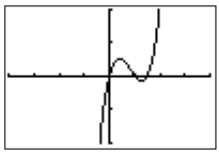
- Al hacer zoom en la gráfica se revelan dos mínimos locales y un máximo local. Gráficamos la función con Xmin=−2, Xmax= 4, Ymin= −1.3, Ymax= 0.5.
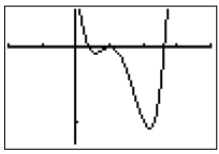
- Hay un mínimo. Aleje el zoom para la gráfica.
Aproximar los máximos y mínimos (locales) de la gráfica. Redondee su respuesta a la décima más cercana.
- \(y=x^3+2x^2-x+1\)
- \(y=x^3-5x^2+8x-3\)
- \(y=-x^4+3x^3+x^2+2\)
- \(y=x^4-x^3-4x^2+6x+2\)
- \(y=x^4-x^3-4x^2+8x+2\)
- \(y=x^4-x^3-4x^2+7x+2\)
- Responder
-
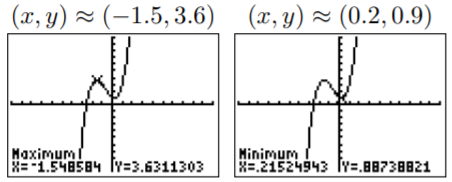
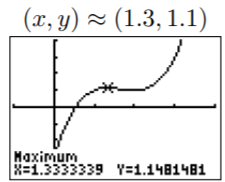
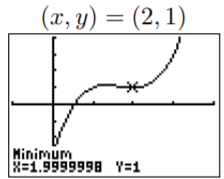
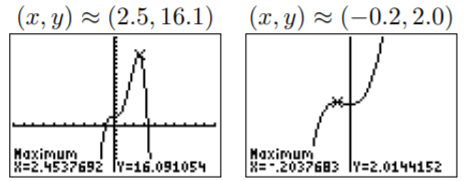
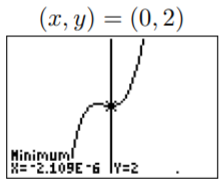
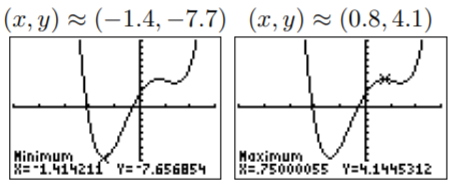
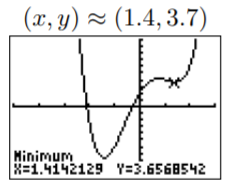
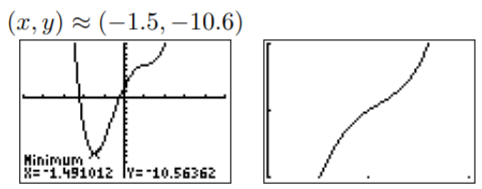 (solo hay un mínimo y ningún máximo en la parte (e))
(solo hay un mínimo y ningún máximo en la parte (e))



